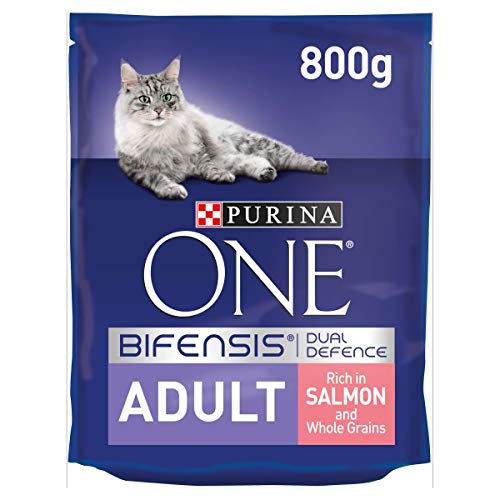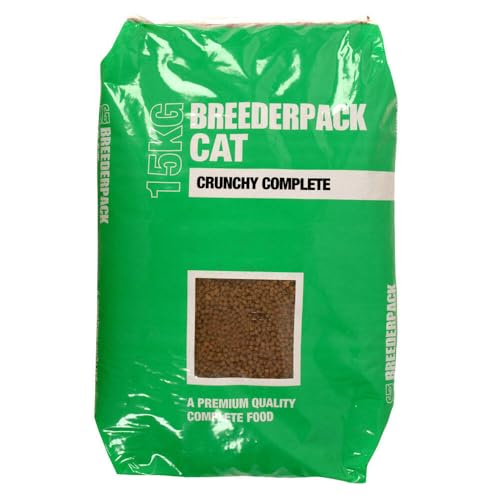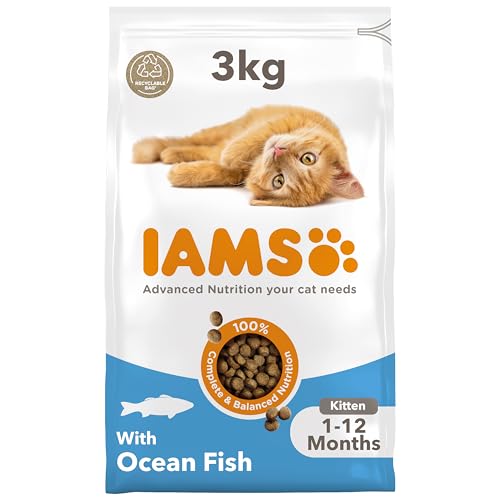Understanding Dry Cat Food: Key Ingredients and Benefits
What Ingredients Matter in Dry Cat Food?
When selecting dry cat food, we should pay attention to the ingredients list. The primary component should be a high-quality source of protein, such as chicken, fish, or beef. Cats are obligate carnivores, meaning their diet must consist primarily of meat. Look for named meats—like ‘chicken meal’—as they provide concentrated protein. Following protein, carbohydrates are necessary for energy. However, we should choose foods with wholesome carbs like brown rice or sweet potatoes, rather than fillers such as corn or wheat, which can offer less nutritional value. Also, keep an eye out for essential fats, such as Omega-3 and Omega-6 fatty acids, which contribute to healthy skin and coat. Lastly, vitamins and minerals must not be overlooked, as they play a vital role in overall health.
Health Benefits of Quality Dry Cat Food
Feeding our cats high-quality dry food can lead to several significant health benefits. A well-formulated dry food can support a healthy weight, which is crucial for preventing obesity—one of the most common health issues in cats. The right balance of proteins, fats, and carbohydrates will help maintain muscle mass and promote energy levels. Additionally, certain formulations include special ingredients like prebiotics or probiotics, which can support digestive health. Ensuring our cats are getting the right nutrients assists in promoting strong teeth and gums as well, since the crunchiness of dry food can help reduce plaque and tartar buildup.
The Importance of Quality Control in Ingredients
The quality of ingredients in dry cat food is paramount. Manufacturers should follow stringent quality control measures to ensure the safety and nutritional value of their products. Always check if the brand sources ingredients from reputable suppliers and if they conduct thorough testing on their final products to assure there are no harmful substances. Understanding where the ingredients originate from can provide peace of mind, knowing you’re feeding your pet a healthy and safe diet.
Choosing the Right Dry Cat Food for Your Feline Friend
Consider Your Cat’s Age and Activity Level
When selecting the perfect dry cat food, we need to consider our cat’s life stage. Kittens require special nutrients for growth, including higher protein and calorie content, while adult cats need food that maintains their energy without excessive fat. Senior cats, on the other hand, may benefit from food that is lower in calories but higher in fiber to aid digestion. Furthermore, if our cats are particularly active or, conversely, more sedentary, we should take that into account as well, adjusting their diet accordingly.
Evaluate Dietary Preferences and Restrictions
Personal tastes also play a key role in selecting dry food. Just like us, cats can be picky eaters. Observe what your cat enjoys—some might prefer chicken-based formulas while others may gravitate towards fish. Moreover, if your cat has any dietary restrictions or allergies, such as sensitivities to grains, it’s crucial to choose foods that align with these needs. Many brands offer specialized formulas, like grain-free or limited ingredient options that ensure our pets can enjoy their meals without any adverse reactions.
Assess Digestibility and Palatability
Another important factor is digestibility; we want to choose a food that optimally supports your cat’s digestion. Formulations rich in fibre can help with digestive transit, while highly palatable options ensure that our feline friends enjoy their food—leading to better overall health. If your cat seems to have trouble processing food or consistently leaves their meal untouched, this could be a signal to experiment with other brands or formulations.
Comparing Popular Dry Cat Food Brands: What Sets Them Apart
Recognising Different Brand Philosophies
Each cat food brand often has a unique philosophy regarding nutrition. Some emphasize natural ingredients and holistic approaches, appealing to pet owners who want the best for their companions. Others may focus on veterinary formulations aimed at specific health issues, such as feline urinary health or weight management. Exploring these philosophies can help us align our choices with what we believe is best for our pets.
Understanding Nutritional Profiles and Claims
Brands differentiate themselves not just through marketing but also through nutrition. Comparing the nutritional profiles on the packaging can reveal which brand provides a balanced diet tailored for our cats. Some brands may boast of high meat content, while others induce the use of novel ingredients to cater to allergies. Understanding these claims can assist in making a fully informed choice, ensuring we choose the best possible diet for our pets.
Pricing vs. Quality Considerations
When comparing brands, price can vary dramatically, and it’s essential to consider what you are getting for your money. While cheaper brands may save on immediate costs, they might lack overall nutritional value. Higher quality brands often use better ingredients, which can lead to fewer vet visits and better long-term health for our cats. Finding a cost-effective option that doesn’t compromise on quality is crucial.
Budget-Friendly Dry Cat Food Options: Quality on a Dime
Finding Economical Choices Without Compromise
If you’re on a budget, don’t worry, as there are affordable yet quality dry cat food options available. Many brands offer value lines that still maintain good standards of nutrition without excessive markup. Look for products that provide balanced nutrition at a lower price point—often found in larger bags that can save money in the long run. Pay attention to ingredient quality; just because a food is cheaper doesn’t mean it has to be inferior.
Understanding Cost-Effective Features
It’s also wise to assess the size of packaging and serving suggestions. Buying in bulk can often yield savings, but be sure to choose a brand that your cat enjoys to ensure the food doesn’t go to waste. Keeping track of portion sizes is important as well; overfeeding even high-quality food can negate savings and lead to health concerns.
Utilising Sales and Promotions
Watch for sales or promotions in local pet stores or online. This can lead to significant savings, allowing us to try new brands without the risk of not having our cats like them. Additionally, consider storing dry food correctly to maintain its freshness, ensuring that you are always feeding your cat the best quality.
Best Practices for Transitioning Your Cat to a New Dry Food
Gradual Change is Key
When introducing a new dry cat food, it’s vital to transition slowly to avoid upsetting your cat’s stomach. Start by mixing a small amount of the new food with their current diet—gradually increasing the ratio of new food over about a week. This method allows your cat’s digestive system to adjust better to the new ingredients.
Monitoring Your Cat’s Response
During the transition, we should monitor our cat’s behaviour, stool consistency, and overall health. If they seem to be experiencing any discomfort or adjusting poorly, we may need to slow down the transition or reassess the food choice altogether. Cats can be sensitive to changes, so patience will be essential during this phase.
Reinforcing Positive Associations
Adding a positive reinforcement mechanism can be beneficial. If your cat enjoys treats or mealtime rituals, sticking to those routines while introducing the new food can create a positive association. Gradually, as our cats adapt to their new diet, they will become more willing to embrace the change.





















